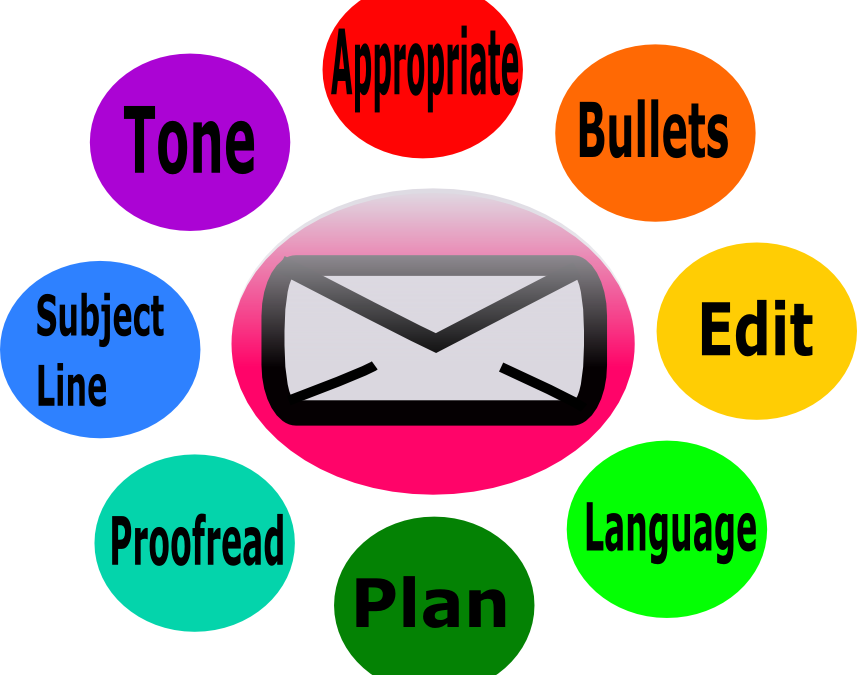Email is fast and efficient and doesn’t require postage or laboriously typed letters on fancy letterhead. But, as with all written communication, it’s definitely got its downsides: you’re relying completely on written words to get your message across. No one will be able to tell by the twinkle in your eye that you’re kidding. Or see by your body language that you’re open to discussion. So you’ll need to be especially careful about what you say in your emails, or you may be misunderstood. And because it’s so easy just to dash off a few lines and hit “send,” plenty of mistakes can slip through, feelings can get hurt, and misunderstandings can occur. So slow down, think about what you’re saying and how it might be received, and follow these general rules of email etiquette:
Reply promptly. Emails should be responded to in less than 24 hours; however, people within your company will probably expect you to get back to them right away.
Use a salutation. Don’t just launch into your message; it’s too abrupt and cold (and “being too busy” is not a legitimate excuse for poor manners). Begin your emails with the recipient’s name preceded by “Hello,” “Good morning,” or “Hi.” With more formal emails, address the person as you would in a business letter (“Dear Ms. Chan”). After this initial email, if you continue with a back-and-forth exchange, you can leave off the salutation and go directly to your response—it becomes more like a live conversation (i.e., you don’t need to say “Hi, John” each time).
Use the subject line. Clearly indicate the topic of your email in the subject line, using a few words that directly relate to what you’ve written. A clearly stated subject will make your email less likely to be overlooked and easier for the receiver to find and file.
Be careful of the tone. Emails take on a tone based on the words you’ve chosen, so try to use the most neutral language possible, while still getting the point across. Joking and sarcasm can be dangerous without accompanying body language, so be careful. Always reread what you’ve written with a critical eye to see if it might possibly be misunderstood. If so, rewrite it.
Use correct grammar and spelling. Unlike the emails you might dash off to your sister, business emails need complete sentences, good grammar, and correct spelling. Although email is usually less formal than a business letter, its content should reflect the fact that you’re a detail-oriented, professional person.
Use completely spelled-out words. This should go without saying, but unless it’s completely accepted in your company culture, don’t use text lingo like “U,” “4,” or “BTW.” Save it for your buds.
Skip the emoticons, colors, and fancy fonts. Not only are these distracting, but they can make you look immature and unprofessional.
Don’t use all caps. Putting words or entire sentences in capital letters within a paragraph makes it look like you’re screaming at the reader. Bolding, italicizing, or underlining can have the same effect. Leave them out of your business emails, unless they’re part of an outline structure.
Be careful what you put in print. Never say anything in an email that you wouldn’t want others to read or hear. All it takes to spread your email around is a click of the “forward” button. Similarly, I’ve witnessed several embarrassing email faux pas when someone accidentally hit the “reply all” button when he meant to send a secret (and sarcastic) aside to only one person in the email group. Talk about an “oops!”
Use a sign-off. Close your email with “Thanks,” “Best regards,” or “Sincerely,” depending on the level of formality. And add your name.
Proofread your emails before sending. Emails count. Read and reread each one before sending it to check for misspellings, poor grammar, missing words, and so on. Does it say what you’ve intended? Is your message clear, or is it ambiguous? Make sure your email is letter-perfect before it goes out.
Remember, everything you say and do reflects who you are, including your emails, so always do your best to represent yourself with professionalism and class!
What’s on your mind these days? Write to me using the CONTACT form on my website and let me know what you’re thinking. And who knows—I might just quote you (with your permission, of course) in my next blog!

